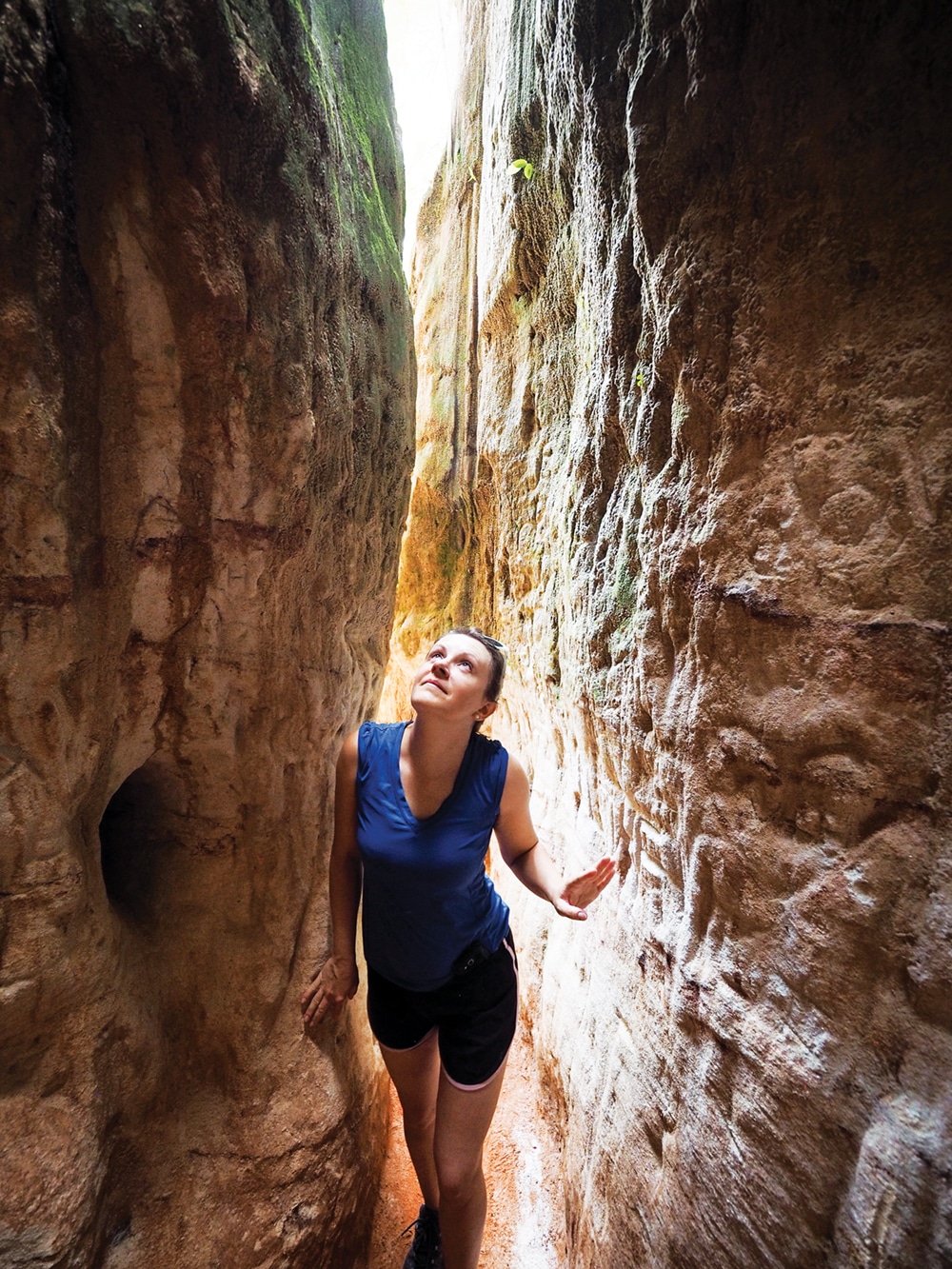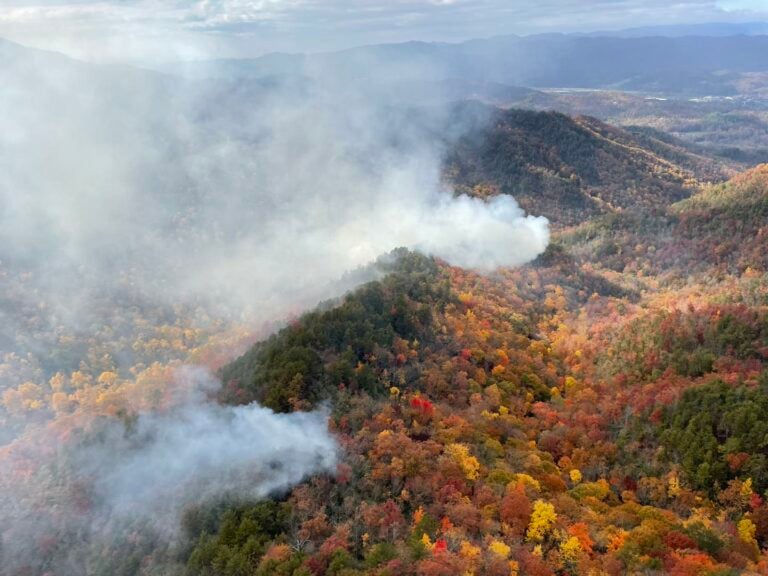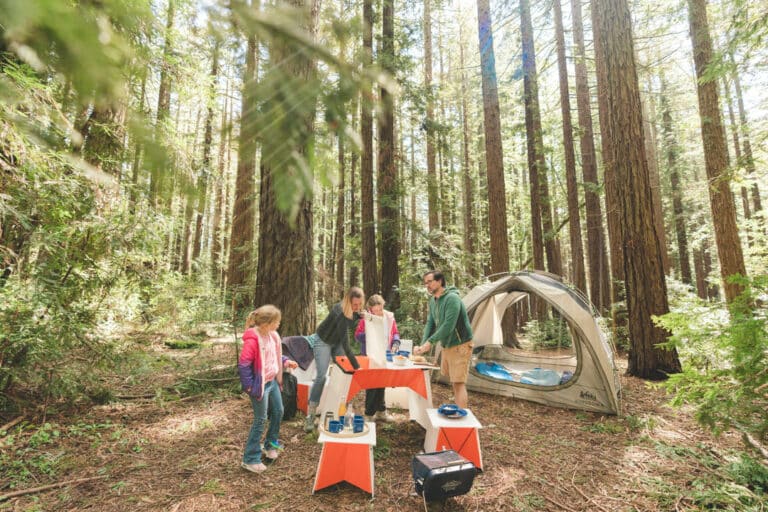Providence Canyon State Park: A Foot Journey Through Georgia’s Little Grand Canyon
One minute we were driving through the rolling hills of rural Georgia. The next minute the bottom dropped away, and a valley appeared below. This sudden burst of topography, just west of Lumpkin, Ga., foreshadowed our arrival at Providence Canyon State Park.
After parking, we walked past the visitor center to an overlook. Through narrow gaps in the dense forest, ridges and cliffs of red and white were visible. It was a surprising contrast to the otherwise typical Southeastern jungle of oak, hickory, and pine. After driving all morning, my wife and I had finally reached the first destination of our road trip: Providence Canyon, the so-called Little Grand Canyon of Georgia.
Full disclosure, I am a big fan of the real-deal Grand Canyon in Arizona. I’ve run the Colorado River through the Canyon three times and backpacked from the rim to the river and back over the course of a week. I had wanted to see this smaller version ever since I learned that Georgia had an alleged miniature Grand Canyon. Most states across the U.S. claim to have their own little grand canyons. While some fit the tag, others fall short. Given Providence Canyon was on our way out west, this seemed like the perfect opportunity to stop by to explore and judge for it for ourselves.
The first stage of our highly scientific two-part reconnaissance mission involved day hiking the 2.5-mile Canyon Loop Trail into the 9 colorful canyons below the park road. So, off we went clockwise around the rim, happy to stretch our legs after a long drive. Along the way, many viewpoints had overgrown with vegetation or were fenced off—a sign of the ongoing erosion occurring throughout the canyon. In a few spots, we got the occasional glimpses we were hoping for.
From top to bottom, about 150 feet of depth, we saw soil formations composed of reds, pinks, oranges, and whites. Other than the presence of so much emerald-green vegetation, the colors did slightly match the real G.C. But how did it compare elevation-wise? The depth of the G.C. varies much over its 277-mile length, but the average depth is around one mile or 5,280 feet.
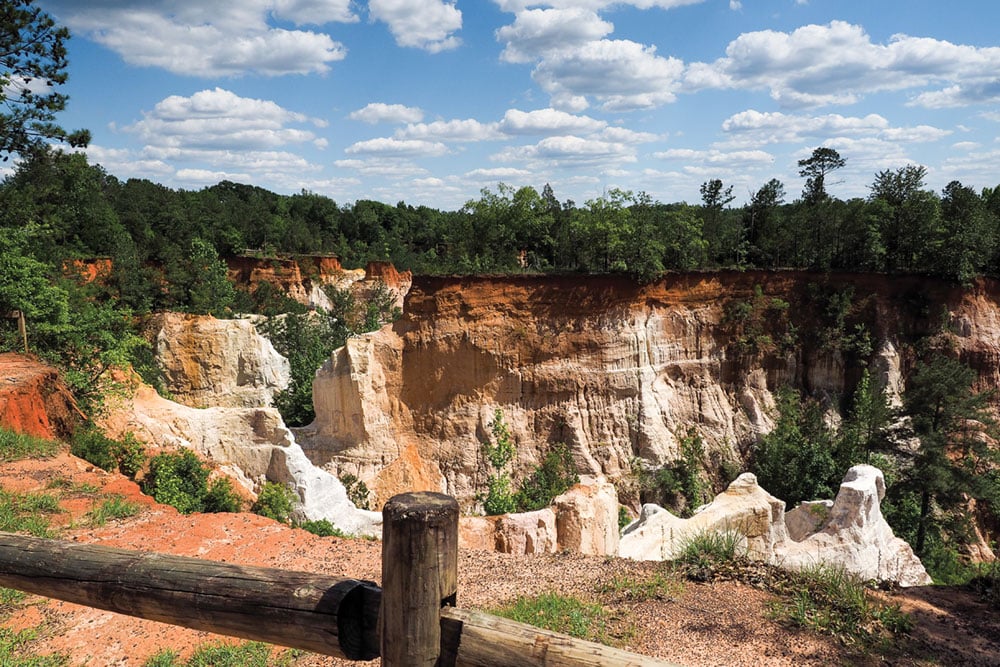
Now, comparing a miniature “Grand Canyon” in Georgia to the one in Arizona is a risky proposition. It sets up the visitor for a major letdown, so any comparison needs to be qualified with a bit realism and humor. Given the ratio of 150 feet to 5,280 feet, we decided we needed to have only 1/35th the fun at Providence Canyon to call our quick visit a success. All joking aside, the goal was to explore Providence Canyon for what it is, not what it isn’t.
“It’s a bit hard to see,” observed my wife.
“I think we’ll have to hike inside to get a real look,” I said.
After walking about 1.5 miles, the trail turned into the forest. We passed a series of rusty 1950s automobiles, abandoned relics from a homestead that once occupied the site. We followed the trail downhill into the canyon, saying hello to groups of other hikers as we went. On the canyon floor, trail signs indicated the path to the side canyons was in the creek channel. There was only an inch or so of flowing water, braiding its way through snaking channels, so we walked upstream.
We explored in order, starting with side canyons 1, 2, and 3. We soon found that the real gems were Canyons 4 and 5, with sheer colorful cliffs rising above. The only disappointment was that thousands of overlapping names carved pointlessly into the soft sediments. Then we stumbled, no joke, upon a slot canyon. And then another one.
Many people don’t realize that a major highlight of exploring the real Grand Canyon, whether running the river or backpacking deep inside, is visiting the many side canyons. Many of these side canyons narrow to impressive slots. If they were located anywhere else—other than a massive and hard-to-reach desert wilderness—these slot canyons would be world-class destinations, much like Antelope Canyon near Page, Arizona, or the Narrows in Zion National Park.
The two slot canyons we found in Providence Canyon weren’t anything quite like those found in the American Southwest, just some narrow passageways eroded into soft clay. But they were easily way more than 1/35th the fun of a world-class slot canyon. Following the previously established equation, these were pretty darn nice slot canyons to stumble across in the middle of rural Georgia.
Our survey of the canyon floor complete, we hiked back up to the visitor center to get ready for the second stage of our visit. After having sandwiches topside, we pulled camping gear from our vehicle. While packing up, we met a trio of backpackers about to start their own hike. We paused to chat with them about the area.
“The funny thing is,” said one of the backpackers. “This is one of the seven natural wonders of Georgia, but it was created unnaturally, by poor farming practices.”
During the mid-1800s, the forest was cleared for farming, and rainwater runoff began to erode into the soil. The canyon is named for the Providence Methodist Church, which once stood on land washed away into the main gorge.
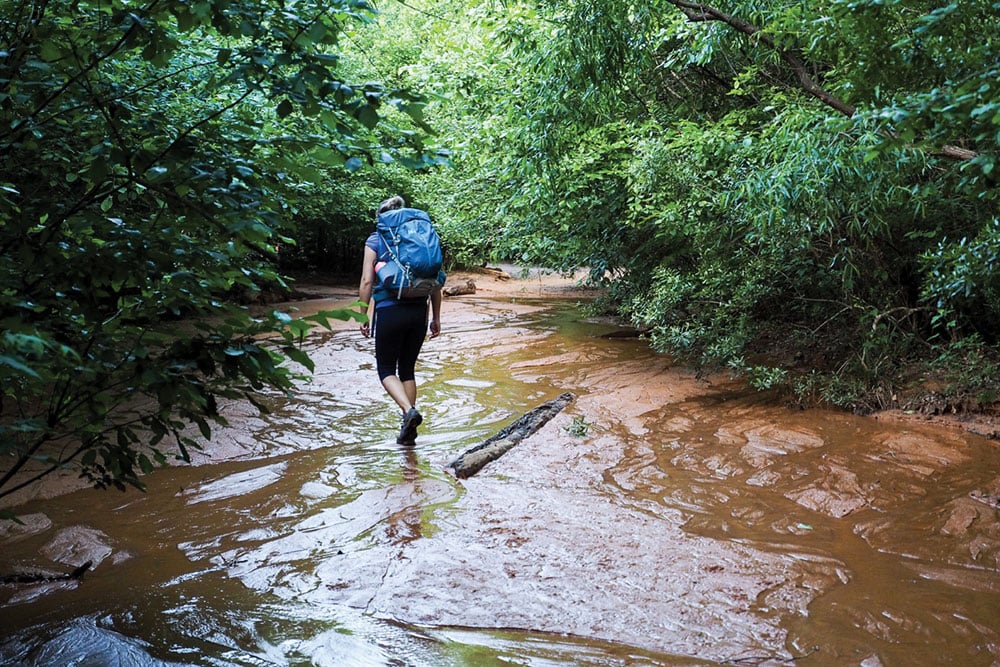
After dinner, my wife and I slipped on our backpacks and headed out on Providence Canyon’s Backcountry Trail, which winds for seven miles through the 1,000-acre park. There are six backcountry campsites on the trail, all requiring reservations. Our site was #5, an easy two-mile hike from the visitor center.
It was almost 7pm when we returned to the canyon floor. The park felt empty and quiet. While hiking downstream through the creek channel, we had our final Grand Canyon-like experience. In the brush nearby, we heard an animal snort. My wife worried it was a mountain lion. I thought it was a feral pig. Whatever it was, it soon moved off through the forest. In camp, later that night, we heard another one, snorting its way along the ground.
Red rocks. Slot Canyons. And wildlife encounters. It was a miniature Grand Canyon after all. Deep in the heart of rural Georgia.
Cover photo: Slot canyons, more typical of western landscapes, can be explored at providence Canyon State Park. Photo by Mike Bezemek
